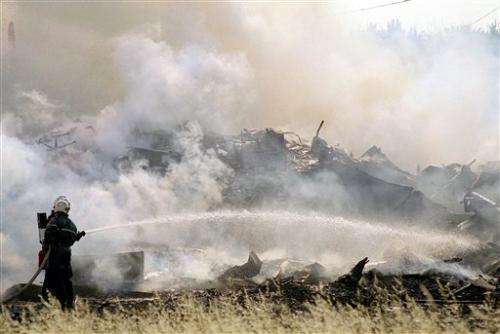Once technology's height, Concord timeline at end

A French court overturned the conviction of Continental Airlines and its mechanic in the crash of a Concorde that helped lead to the demise of the whole supersonic jet's program.
Here are key moments in its history:
1950s: The idea of a supersonic passenger plane gains momentum after legendary U.S. aviator Chuck Yeager's 1947 blast through the sound barrier.
1969: The plane, manufactured jointly by France and Britain, lifts off from Toulouse, France, for its first test flight.
1976: The Concorde begins commercial service at Air France and British Airways. It mainly flies from London and Paris to New York and Washington, DC. It is hailed as a technological marvel, but its economics are shaky and it never makes back the billions of tax dollars invested in it. Protests emerge about its noise and lack of fuel efficiency during an oil crisis.
1984: Britain and France stop underwriting the Concorde's costs, and the two airlines take responsibility.
2000: An Air France Concorde crashes after takeoff from Paris on July 25, 2000, killing 113 people and forcing both airlines to ground their supersonic jets for over a year.
2001: Overhauled Concordes return to service two months after the Sept. 11, 2001 terrorist attacks, in the middle of one of aviation's worst slumps.
2003: Air France and British Airways both retire their Concordes, citing financial losses on the planes' routes.
2010: A French court convicts Continental Airlines and one of its mechanics, John Taylor, of manslaughter in the 2000 Concorde crash. The court says Continental was to blame because one of its planes dropped metal debris onto the runway before the Concorde took off, rupturing one of its tires and sending rubber into the fuel tanks, sparking a fire.
2012: A French appeals court overturns the convictions, ruling that the mechanic's mistakes did not rise to the level of legal responsibility for the deaths.
Copyright 2012 The Associated Press. All rights reserved. This material may not be published, broadcast, rewritten or redistributed.



















